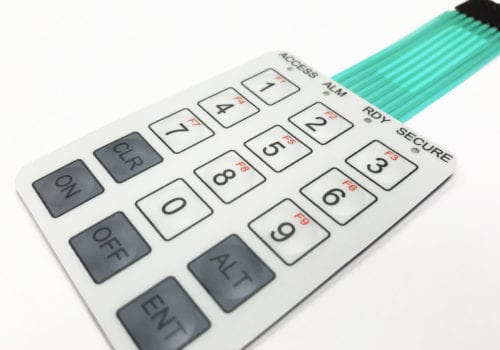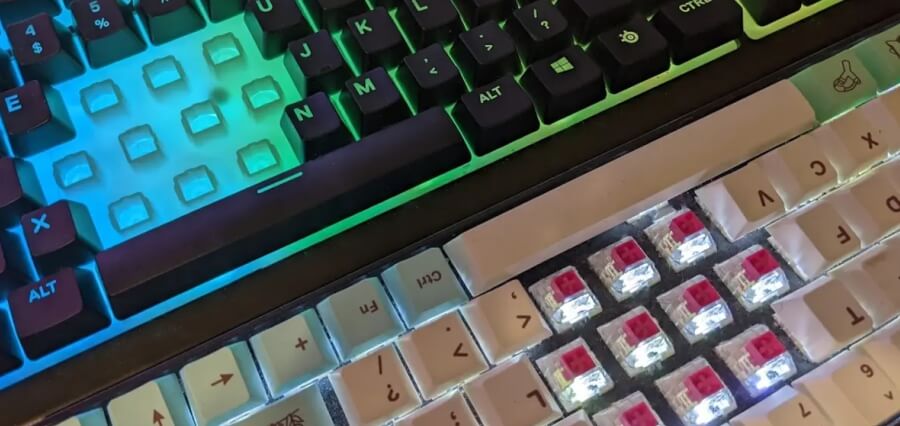The Function of a Membrane Switch in Modern Touch Interfaces and Controls
The Function of a Membrane Switch in Modern Touch Interfaces and Controls
Blog Article
Comprehending the Functionality of Membrane Layer Switches Over for Customer User Interface Gadget
The functionality of membrane layer switches over stands for a substantial innovation in interface design, integrating efficiency with aesthetic flexibility. These switches operate with a multi-layered framework that translates user communications into electrical signals, permitting for both small designs and durability against environmental variables. As industries increasingly focus on individual experience, understanding the subtleties of membrane button modern technology becomes vital. What ramifications do these improvements hold for future applications, and exactly how might they redefine user interactions across different devices?
What Are Membrane Layer Switches?
Membrane layer buttons are cutting-edge interface gadgets that assist in individual communication with electronic equipment. These versatile elements include multiple layers, including a visuals overlay, spacer, and a published circuit layer. The style enables a seamless integration right into numerous digital devices, enhancing both the aesthetic and useful elements of interface.
Membrane buttons are typically used in a wide variety of applications, from family devices to industrial equipment and clinical gadgets. Their building and construction typically features a slim account, making them an excellent choice for portable designs. The responsive feedback offered by these buttons can be engineered to fulfill certain user preferences, ensuring efficient interaction between the customer and the gadget.
Longevity is another substantial advantage of membrane layer buttons, as they are resistant to dirt, moisture, and chemicals, which improves their lifespan popular settings. In addition, these buttons can be personalized in terms of shape, dimension, and visuals layout, enabling branding and user-specific features. Overall, membrane layer switches represent a practical solution for enhancing user experience in digital tools, incorporating functionality with aesthetic allure in a reliable manner.
Just How Membrane Switches Over Work
Operating on a straightforward concept, membrane switches over utilize a layered construction to register customer input effectively. Each button includes multiple layers, including a published circuit layer, a spacer layer, and a top graphic layer, which are created to collaborate flawlessly. When a customer presses the top layer, it presses the spacer layer, bringing the conductive aspects of the circuit layer into call with each other.
This contact produces a shut circuit, signifying the device to execute a details feature. The design enables for different configurations, consisting of tactile comments, which can improve the customer experience by providing a physical feeling upon activation. The materials made use of in membrane layer buttons often include versatile substratums, such as polyester or polycarbonate, which ensure toughness and resilience versus damage.

Key Advantages of Membrane Switches

One more substantial advantage is their density. Membrane switches are thin and light-weight, which enables manufacturers to conserve space in their gadgets without giving up capability. This feature is specifically helpful in applications where weight and volume are critical considerations.
Additionally, membrane layer switches are resistant to dirt, wetness, and chemicals, boosting their toughness. This resilience expands their go to website life expectancy and reduces the demand for frequent substitutes, resulting in price financial savings in time.
In addition, the tactile responses offered by membrane switches can be enhanced to boost individual communication. They can include attributes such as raised switches or audible clicks, enhancing use and customer experience.
Applications Throughout Industries
Interface devices utilizing membrane layer switches prevail in a large variety of markets, showcasing their adaptability and performance. Membrane Switch. In the medical sector, membrane layer buttons are integral to gadgets such as analysis tools and person monitoring systems, where their resilience and ease of cleaning are critical for preserving health standards. In the auto industry, these switches are used in control panel controls and infotainment systems, providing a sleek and modern-day user interface for customers.
In addition, the consumer electronic devices sector benefits from membrane buttons in devices and portable devices, where portable style and user-friendly user interfaces improve customer experience. Industrial applications additionally take advantage of membrane switches over for control board in equipment and automation systems, emphasizing their effectiveness and resistance to severe settings.
In the aerospace and defense markets, membrane buttons are used in cockpit controls and tools, where integrity and performance under extreme problems are paramount. In addition, the video gaming industry significantly incorporates membrane buttons in controllers and game devices, contributing to an appealing individual experience. Generally, you can find out more the convenience of membrane layer switches allows their extensive use throughout various industries, underscoring their importance in contemporary customer interface design.
Future Fads in Membrane Switch Over Technology

Additionally, using innovative products, such as polycarbonate and polyester films, is anticipated to increase, providing improved toughness and resistance to environmental stressors. These materials contribute to the total durability of membrane switches, making them appropriate for harsher commercial applications.
Furthermore, the incorporation of smart technology, including IoT connectivity, will make it possible for membrane layer buttons to interact with other gadgets and systems, facilitating an extra interactive customer experience. look at this website This pattern straightens with the growing need for wise tools across various sectors, from medical care to customer electronics.
Finally, modification options are prepared for to expand, allowing manufacturers to produce bespoke options tailored to specific user requirements and choices. These developments will certainly place membrane layer buttons as vital elements in the development of user interface technology.
Verdict
To conclude, membrane layer switches stand for an essential improvement in customer interface innovation, supplying a dependable and flexible option for diverse electronic applications. Their layered construction promotes compact style, while features such as responsive comments enhance customer interaction. The sturdiness versus environmental aspects better solidifies their utility across several industries. As advancements in product science and touch picking up innovations proceed, the performance and applicability of membrane layer buttons are expected to increase, reinforcing their value in contemporary digital gadgets.
Report this page